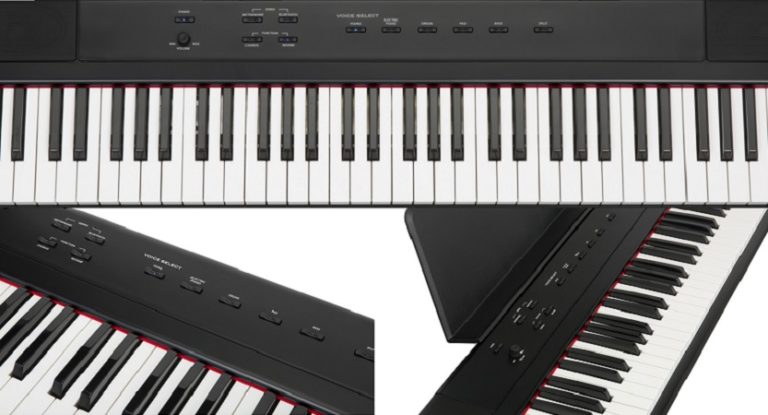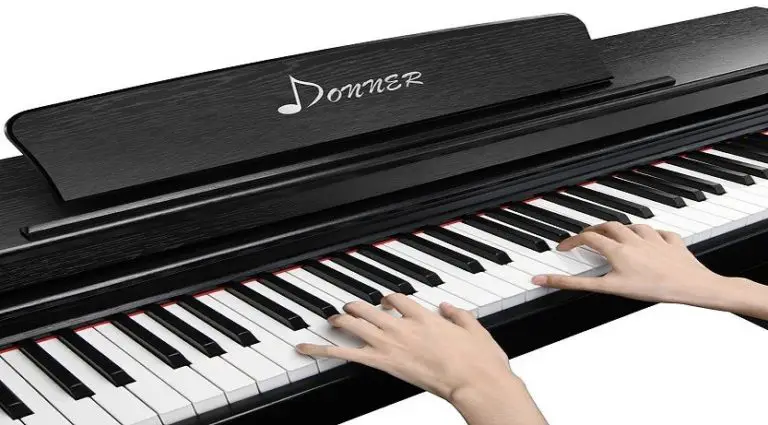What is polyphony on a digital piano?
Piano as a musical instrument is a fascinating machine that combines mechanical, physical and technological elements to produce sound. It has a huge range of different settings which you can easily control on the fly. Thus, you can go from a jazz sound to a classical piece to an ambient track. It’s this variety that makes the piano such a versatile instrument. However, one aspect of the piano that is often overlooked is its ability to play two different notes simultaneously. Called polyphony, this feature is what makes the piano stand out from many other instruments and is crucial to its versatility. So, what is polyphony on a digital keyboard or piano? Let’s understand!
What Is Polyphony?
If you play or practice on a digital keyboard or piano, chances are you’ve come across the term “polyphony.” By definition, polyphony is the maximum number of notes that any piano can play. In fact, its core definition is well embedded within its wording. Poly (many) + Phony (noise or sounds) = Polyphony (many sounds).
However, many uneducated individuals may argue that the significance of polyphony is debatable given every pianist – like every other human being have 10 fingers, so that would mean the maximum number of notes that he/she can play is 10! Unfortunately, the complexity of piano actually lies in its sustain pedal.
Sustain pedal is responsible for sustaining the sound of the piano notes which basically is holding the notes or keys down for a duration of time which can be controlled by the musician. You could call it the pause button but while the pedal is pressed, it elongates the sound or note to make it sound more distinct and allow the musician to play chords.
In theory, every acoustic piano can generate infinite sustain and therefore polyphony. But the practical reality is that every acoustic piano has its polyphony limit which is dictated by the number of strings it has. The same is true for digital pianos.
What Is Polyphony on a Digital Piano?
Polyphony, just as in acoustic piano is a term used in reference to a digital piano’s capacity to play more than one note at a time. It is an important specification when comparing various models of digital pianos. In theory, polyphony gives the user the ability to perform complex passages without running into any problems with notes hanging or being cut off. A digital piano with 128 polyphony will typically allow you to work through complex jazz chords and harmonies with ease and precision. However, you can still use this function even if your piano doesn’t have as much polyphony as you would like; it just means that you may need to be a little careful when you are working with a lot of notes at once or you will notice some notes getting cut off before others. This will definitely result in an uneven sound that will prevent you from producing the desired effect.
Why Polyphony Matters?
In the world of ever dynamic advancements, polyphony has got more intriguing and captivating. Just like other digital instruments, digital keyboard pianos have evolved from just being a machine which produces sound to becoming a sophisticated instrument which can produce sounds with clarity and precision which will not only delight your ear but your soul as well. Therefore, if you really desire to express your creative self in a deep way, polyphony is just what you need. It empowers you to connect, compose and produce beautiful music that will leave an everlasting impression on others.
Even for beginners who are beginning to build their piano skills, the polyphony must be taken into consideration. That’s because after acquiring a certain level of proficiency, the player must focus on his or her technique that will require the high levels of polyphony.
Therefore, for most beginners, it is a good idea to get a keyboard or piano that offers a reasonable amount of polyphony (128 or more). It will help your musical journey progress in the right direction without many annoying hiccups along the way.






